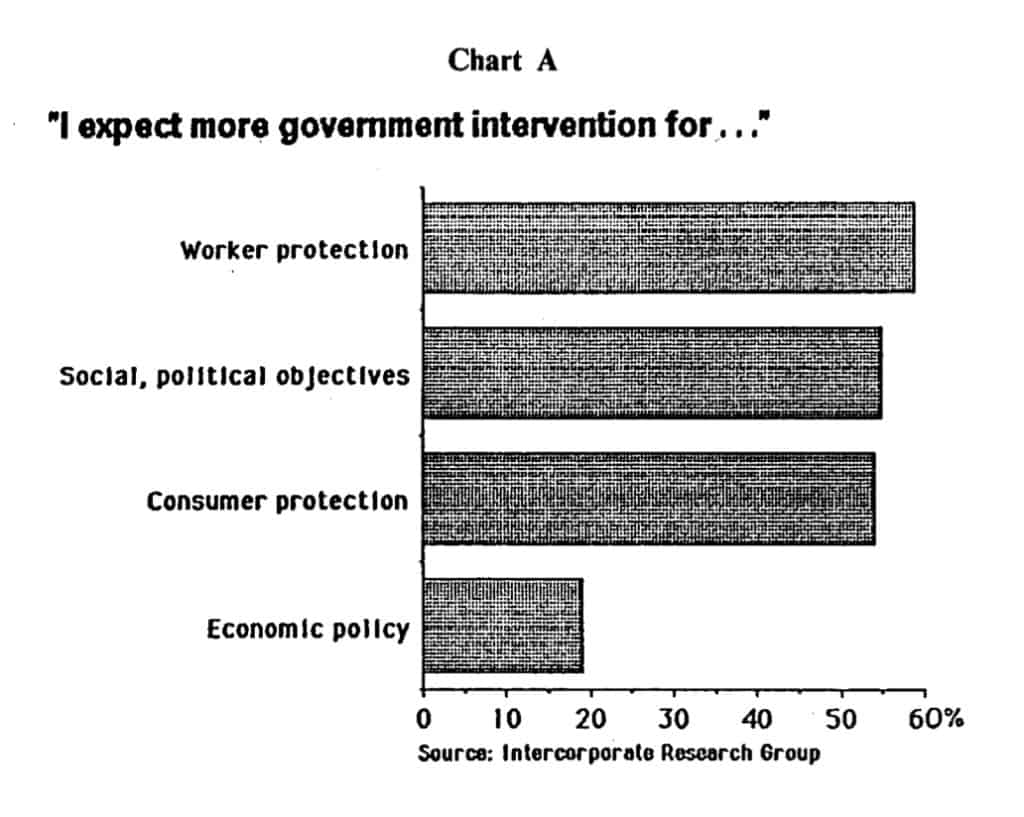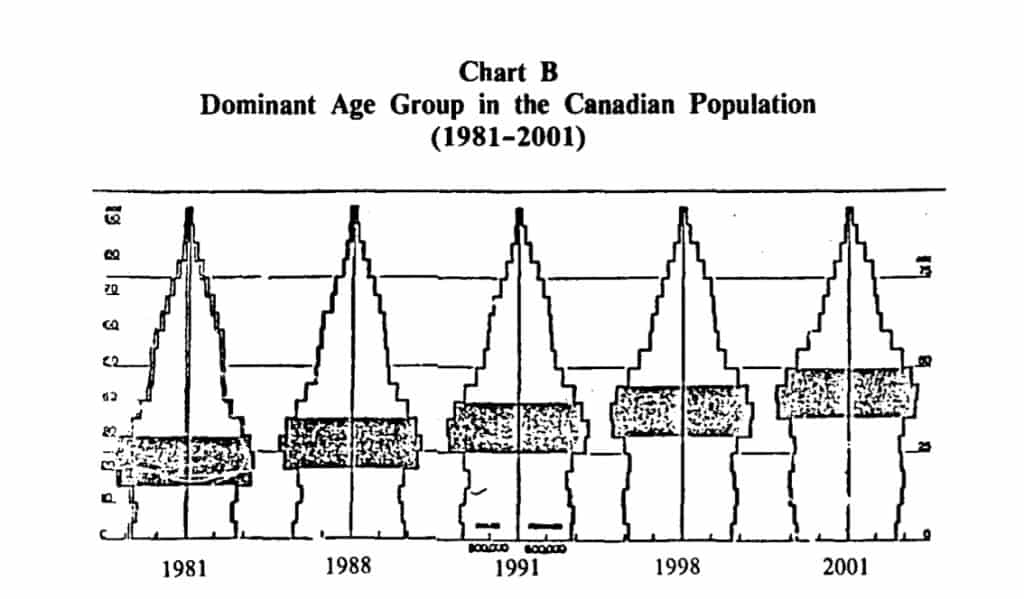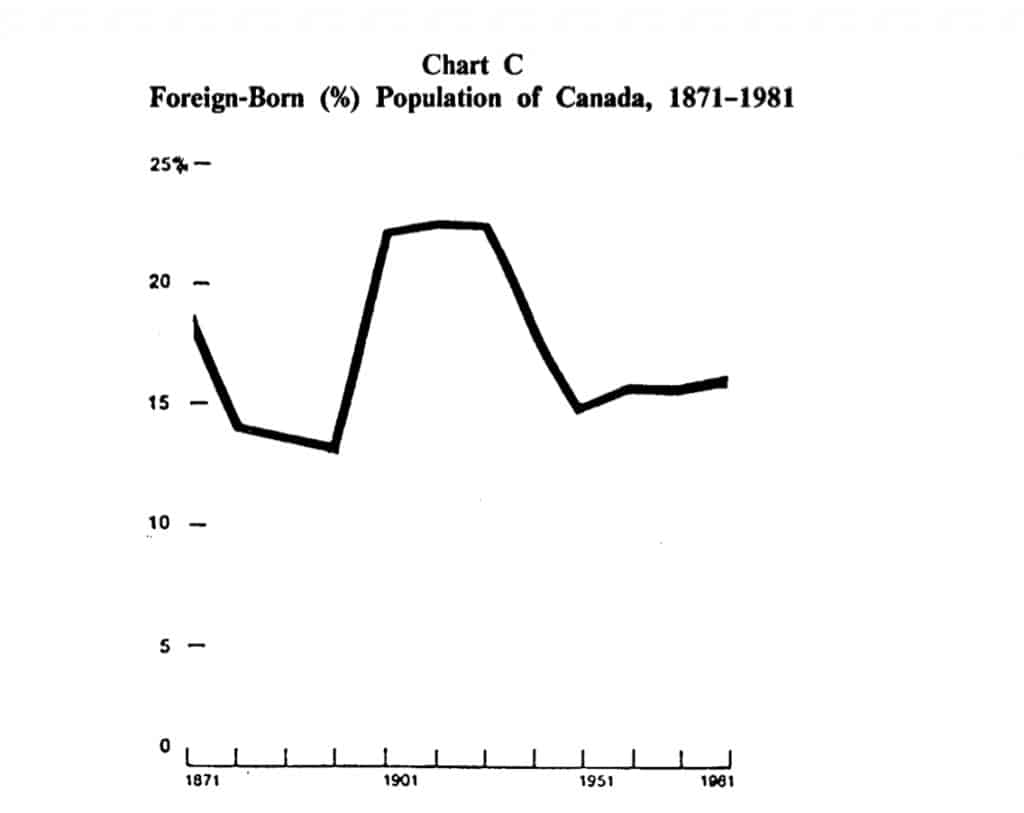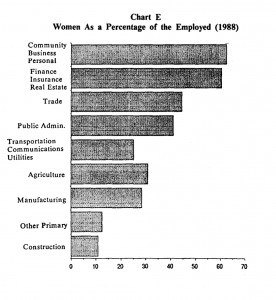The charitable sector covers all aspects of society and is, accordingly, affected by a broad range of social phenomena. I want to point out several such phenomena that some of us futurists think will have a notable impact on the sector in the years to come.
I should mention at the outset that, in the old phrase, “the future is not what it used to be”. Back in the 1960s, predicting the future meant using a straight-edged ruler to project the trend lines of growth further in the same direction. Not only was it simple, it was generally accurate. Life has become complex since then, and the straight lines have come to look like corkscrews. United States President George Bush, who has a lot of futurists working for him, has said he can’t see ahead more than 10 days.
In these circumstances, should you believe my predictions? Maybe!
The Role of Government
Many people in our society look to government to solve the problems of the day. Those born after 1950, the first children of the welfare state, are most reluctant to contemplate dismantling the public support structures for welfare, health, education, and so on. Older people are prepared to be more flexible. Nevertheless, the prevailing attitude seems to be that if something is important, the government will do something about it This has implications both for the perceived importance of the non-profit or charitable sector and for the likelihood of its retaining its independence from government direction.
The amount of the Gross National Product spent by governments at all levels has grown since 1946 from about 17 per cent to over 45 per cent Present trends will take it to 50 per cent by the mid-1990s, though there has been some effort at the federal level to slow the growth since the mid-1980s. We hear much today about “deregulation” and “downsizing” of government To the extent that these occur, they will almost certainly
This article was developed from a presentation to The Philanthropoids, Friends of The Canadian Centre for Philanthropy, at the Centre’s Tenth Annual Conference on Philanthropy, November 1989, Toronto.
be limited to reduced intervention in economic policy. Subsidies for all elements of the economy may fall, whether through the ideological disposition of governments, pressures of international trade under the Free Trade Agreement and the GATT talks, or just the unbearable expense of maintaining the present system.
However,1 see no evidence of a trend to less government action to protect workers or consumers, to meet social or political objectives, or to conserve the environment A recent survey of business people and civil servants foresaw a constant. or an increased, role for the state in these areas. While government may seem to be reducing its activities across the board in the United States and Britain, no one sees this happening in Canada. (Chart A)
Demography
The most important fact about the Canadian population is “the baby bulge” of people born between 1951 and 1966. Chart B (page 26) shows the position of the bulge in 1991, 1996 and 2001. Prior and subsequent generations will have less influence on social trends simply because they are smaller. Members of the dominant group will be in early middle age at the tum of the century, not at all old or likely to relinquish whatever positions they have achieved. They will still be among the downhill skiers, not just the cross-country types. Investments in shares of companies catering to the geriatric set may be premature for the next decade!
Chart B Dominant Age Group in the Canadian Population (1981-2001)
This dominant group will still be mobile, upwardly or outwardly. Its members will be open to suggestions about how they should live. This characteristic may open possibilities for charities, and for campaigns like IMAGINE [(1989), 8 Philanthrop. No. 4 p. 15). It is realistic to predict that the dominance of this generation will last until at least 2010, though it should be less noticeable by 2020. (Chart B)
Another demographic factor that will affect charities is the dependency rate. This is the ratio of people not working in the labour force to people who are. The number of people under 19 years old is declining, while those over 65 are increasing. However, these changes are very slow, and their impact will be perceptible only over many years.
Immigration will have a more important effect The percentage of the Canadian population made up of those not born in the country has been fairly stable over the last 100 years or so, at about 15-20 per cent (Chart C, page 27) This percentage may again be on the rise. It is often feared that waves of immigrants, especially from non-European countries, will not fit into “Canadian ways”, whatever those may be. In the charitable sector the fear is expressed that many immigrants come from societies where charitable actions are centred on the religious or family group rather than on society as a whole or social organizations.
Chart C
On the other hand, immigrants do tend to integrate into the general Canadian society, although they no doubt cause some changes in the society as they do. The longer people are here, the more likely they are to become citizens. For example, over 95 per cent of all immigrants who arrived before 1946 are now citizens. Those who are ambitious or educated, or both, will want to emulate the surrounding community, in order to do well. There are few if any “ghettos” where only the traditional values operate. Immigrants watch the same television programs and shop in the same malls as native-born Canadians. Their children integrate even more quickly. (Chart D, page 28)
I do not want to understate the importance of the effect of immigration on Canadian society or on the charitable sector. Those of us who are interested in the development of the community have to be prepared to work with immigrants and teach them what we have that is valuable, and also be prepared to learn from them what may help us as our community evolves.
Chart D Population by Citizenship, 1986
Part of the effect of immigration is the changing makeup of religious affiliation in Canada. About half the country is now Roman Catholic, and the concentration and growth of that denomination is no longer in French Canada. In addition, the “new Christian” churches-mainly of “fundamentalist” persuasion-are growing while the adherents of traditional Protestant churches are declining as a percentage of the population. If,as studies suggest, people who are religious are more likely to volunteer their money and services to serve others than those who are not, then this trend may have a positive impact on the charitable sector. Estimating the effect of the changes in religious attachment is, however, extremely difficult and I make no predictions with great confidence in this area.
Work
Over the course of this century the average number of hours worked per week has declined steadily and is now about 32. It may reach 25 hours a week by the year 2000. While many people work much longer hours, many others are employed only part time, for 10 or 20 hours a week.
Some evidence suggests that people consider time spent volunteering as more like time spent working than time spent at leisure. People working a lot also volunteer a lot; the unemployed or underemployed do not volunteer as much. So increasing “leisure” time may not increase volunteers.
A trend more likely to indicate good times for those dependent on volunteers is the increasing level of education of the population. Volunteering increases with education, as a rule. This will probably prove more important than the average hours worked in predicting the number of people willing to help.
On the other side of the picture is the composition of the labour force as a whole. Two trends are likely to affect charities. The first is an absolute labour shortage that will be felt before the end of the century. We are already experiencing it in large metropolitan areas like Toronto, among younger people. By the year 2000, there will be many fewer people under the age of 30 in relation to the size of the population. Not only will this lead to pressure for increased immigration, with the effects noted earlier, but it will also lead to increased wages as employers seek to attract workers. This may adversely affect the number of people who choose to volunteer instead of working for pay.
The second trend is the rate of participation in the labour force. The proportion of men who participate in the labour force is slowly declining and will perhaps be down to 90 per cent by the tum of the century. The drop is caused by changes in the demand for some skills among those not able to retrain, by aging, and by leaves and sabbaticals, among other reasons. Meanwhile the female participation rate is growing, and should equal or surpass the male rate soon after 2000. We will see a labour force dominated by women in many sectors. (Chart E, page 30)
The combination of pressure on all to participate in the labour force to meet the shortage of workers, and the increasing participation of women, whose volunteering rate is higher than that of men, will put pressure on charities who depend on volunteers to carry on their activities.
There is a strong negative correlation between women’s participation in the labour force and their fertility rates. The more women there are working outside the home, the fewer babies are born. Since one of the main incentives to volunteering is to benefit one’s children-thus skating clubs, dance classes, “little leagues”-the employment trend may have an even greater effect on the non-profit sector.
The final note on work and its effect on volunteers could be called the “culture” of employment. This is the combination of qualities that makes the workplace satisfying for the employee or satisfactory for the employer. The values each seeks can be related so that matching an employee demand and an employer demand will advance the interests of both. The principal objectives are these:
Employees
Independence
Self-Development
Ownership (of the task)
Employers Contribution Motivation
Commitment
Both large and small employers agree that the single most powerful source of motivation is the opportunity for self-development. While I have not personally examined whether the same factors operate between volunteers and their organizations, I suspect strongly that they do. In the days to come, days of competition for the time of potential volunteers, the charitable sector should become familiar with this kind of analysis and take it fully into account for its own protection and benefit.
Chart E Women As a Percentage of the Employed (1988)
Conclusion
These are just a few of the major developments I foresee shaping our society in the next decade or two. The charitable sector will not be isolated from them nor should it seek to be. The task it faces is to anticipate the effect of trends and to evolve in the way that will best setVe the community that is evolving with it
JOHN KETILE
Editor, The FutureLetter, Toronto






